Panamic Comb Venus Clam Shell, Hysteroconcha lupanaria
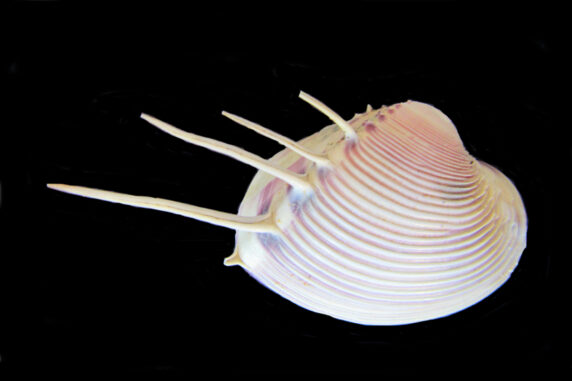
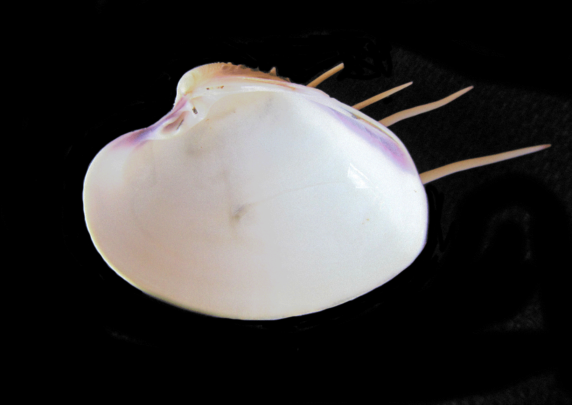 Panamic Comb Venus Clam Shell, Hysteroconcha lupanaria. Shell collected within Magdalena Bay, Baja California Sur, October 2019. Size: 7.6 cm (3.0 inches) x 3.9 cm (1.5 inches) including spines. Identification courtesy of Bob Hillis, Ivins, Utah.
Panamic Comb Venus Clam Shell, Hysteroconcha lupanaria. Shell collected within Magdalena Bay, Baja California Sur, October 2019. Size: 7.6 cm (3.0 inches) x 3.9 cm (1.5 inches) including spines. Identification courtesy of Bob Hillis, Ivins, Utah.
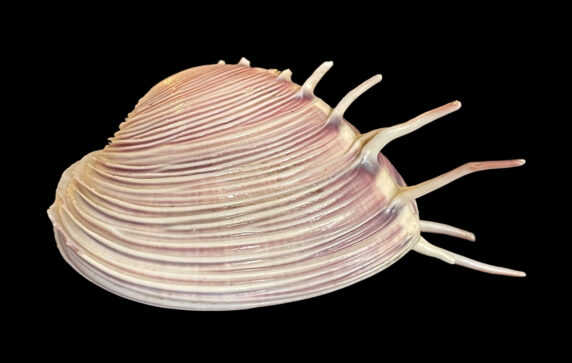
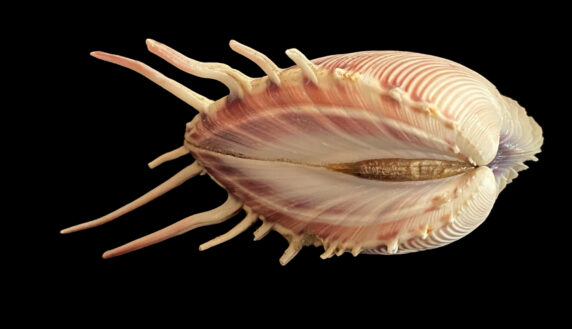
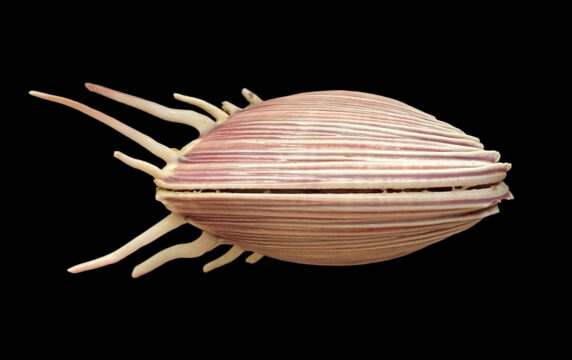 Panamic Comb Venus Clam Shell, Hysteroconcha lupanaria. Shell collected off the beach of San Juanico, Baja California Sur, February 2023. Size: 7.9 cm (3.1 inches) x 6.1 cm (2.4 inches) x 4.1 cm (1.6 inches). Collection, photograph and Identification courtesy of Colin Campbell, DVM, Punta Chivato, Baja California Sur.
Panamic Comb Venus Clam Shell, Hysteroconcha lupanaria. Shell collected off the beach of San Juanico, Baja California Sur, February 2023. Size: 7.9 cm (3.1 inches) x 6.1 cm (2.4 inches) x 4.1 cm (1.6 inches). Collection, photograph and Identification courtesy of Colin Campbell, DVM, Punta Chivato, Baja California Sur.
The Panamic Comb Venus Clam, Hysteroconcha lupanaria (Lesson, 1831), is a bivalve mollusk that is a member of the Veneridae Family of Venus Clams. Their shell is one of the most elegant appearing shells in the Family. The shell is shaped like a rounded triangle with two rows of straight to slightly curved spines projecting from the posterior of the shell. Often, some or all of the spines have broken off, especially along the row closest to the posterior margin. The shell is fairly thick and moderately inflated with the exterior being sculpted with numerous commarginal ribs. The exterior of the shell is cream, tan or lavender in color with brown or purple hues that are most pronounced at the base of the spines and the interior is white or brown with purple blotches. The shells are covered with a thin, silky periostracum. The Panamic Comb Venus Clam reach a maximum of 7.8 cm (3.1 inches) in length and 4.1 cm (1.6 inches) in height.
Panamic Comb Venus Clams are found in sand substrate in the intertidal zone to depths up to 25 m (82 feet). They are found in all Mexican waters of the Pacific with the exception that they are absent from north of Punta Pequeña (north of Magdalena Bay), Baja California Sur and from the Sea of Cortez.
Synonyms include Cytherea lupanaria, Cytherea semilamellosa, Pitar lupanaria, and Venus lupanarian.